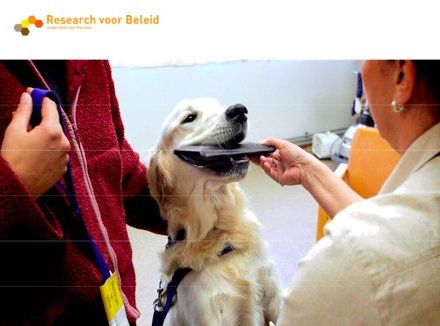Cost and Effectiveness of Service Dogs
From a study commissioned by the Health Insurance Board, Netherlands. Marjon Diepenhorst, Tom Weijnen, Felicie van Vree, Project number: B3679, Zoetermeer, 9 March 2011. Abstract, published in Dutch.
The central research question:
To what extent and what cost do assistance dogs contribute to:
- Increasing the independence of the person
- Reducing the use of care support
compared to other aids/professional help/informal care?
Savings: $92,664
Highlights
The core of this cost-utility analysis is the comparison between a care recipient with and a care recipient without an assistance dog in terms of cost of care and support. The group and the control group consisted of 200 care recipients. Case studies with interviews were also conducted.
Part of the many cost savings from service dog ownership is realized in health care. Based on this factor, (which includes deducting the annual cost of care of the dog such as food and veterarian bills) the annual savings for the service dog owner are €8,400 (in 2011, the exchange to dollars is an annual savings of $11,583) compared the costs incurred by a person without an service dog. This health care savings alone makes the service dog, with an effective life span of 8 years, a cost-effective strategy, because the costs are lower (saving an average of $92,664)--plus, the quality of life is higher than in the control group.
In the case studies of some service dogs types (such as those for autism), the benefits are even higher: In these cases, the dog has a (very) positive effect on the independence of the care recipients.
- In some investigated cases, the dog may be with them 24-hour a day. In this situation, they not only lessen health care costs, they also contribute to a large extent to the quality of life of the client and their environment.
- In addition, in these researched examples we see enormous savings in informal care and voluntary care.
Citation
Diepenhorst, M., Weijnen, T., & Van Vree, F. (2010). Kosten en effectiviteit van hulphonden. Eindrapport. Een onderzoek in opdracht van het College voor Zorgverzekeringen. Zoetermeer: Research voor Beleid.
Return On Investment
"Every euro spent on a service dog will create a benefit for society of 2.5 euros."


